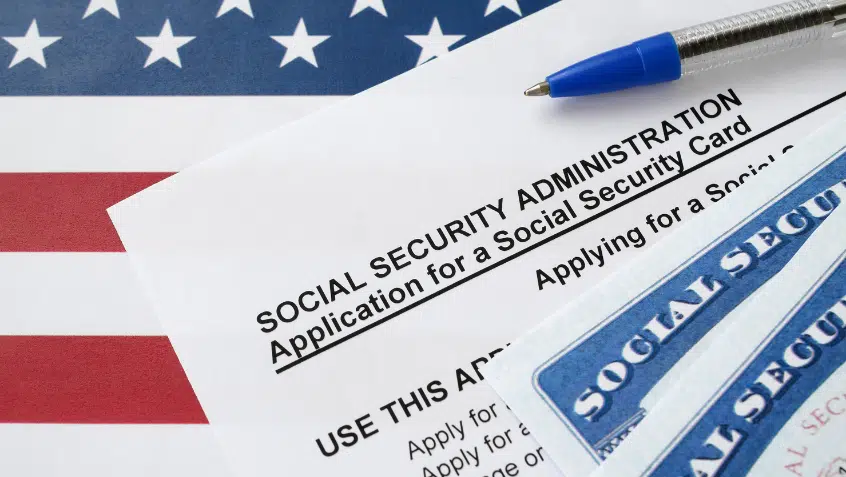President Biden Signs the Inflation Reduction Act into Law

The Medicare Rights Center thanks President Biden for signing—and the House and Senate for passing—the Inflation Reduction Act (IRA) of 2022. This landmark legislation includes policies we have long championed to make health care and prescription drugs more affordable.
Thanks to the IRA:
- More low-income Medicare beneficiaries will be able to afford coverage and care. The bill eliminates the partial Part D Low-Income Subsidy (LIS) benefit—which left enrollees exposed to high costs—and extends eligibility for the more comprehensive full subsidy to those who would have qualified: individuals with incomes between 135% and 150% of poverty and resources at or below the partial LIS limits.
In 2020, over 400,000 Part D enrollees received partial LIS benefits, including a disproportionate number of Black and Hispanic enrollees. Under the IRA, these individuals will receive more robust assistance; their annual out-of-pocket (OOP) costs will fall by $300, on average. Those who take expensive specialty drugs, where the program’s 15% coinsurance rate can be a burden, will see even greater savings. For example, partial LIS enrollees would have paid around $1,700 for a year’s worth of Humira or Enbrel in 2020, while full LIS enrollees would have paid less than $20.
- All 48 million Part D enrollees will finally be protected from limitless and uncertain prescription drug costs. The bill creates a $2,000 cap on annual OOP drug spending and allows these costs to be paid monthly. It also eliminates the 5% coinsurance requirement for catastrophic coverage and holds Part D premium growth at no more than 6% per year.
1.4 million non-LIS enrollees spent $2,000 or more OOP in 2020, and 1.3 million reached the catastrophic coverage threshold ($6,350). These new financial protections will be especially helpful for beneficiaries who take high-cost drugs and may spend thousands of dollars in the catastrophic coverage phase.
- Insulin will be more affordable. The IRA limits insulin co-payments to $35 per month for Part-D covered products and for insulin furnished under Part B, with no deductible.
Currently, over 3 million Part D enrollees use insulin, and one in three have diabetes. On average, in 2020, they paid $600 OOP for insulin. But some had considerably higher costs—25% spent over $800 and 10% spent over $1,300.
- People with Medicare will be able to receive critical vaccines free of charge. The IRA eliminates cost-sharing and deductibles for Part D vaccines that are recommended by the Advisory Committee on Immunization Practices (ACIP), such as shingles, and under Medicaid. This policy already applies to Medicare Part B and most private plans. Its expansion will save costs and improve access to necessary preventive care.
This will help the approximately 4 million Medicare beneficiaries who receive a Part D-covered vaccine each year—including the 3.6 million who received the shingles vaccine in 2020, at an average cost of over $100. However, it will also reach millions more. Research shows Part D immunization rates are well below those for Part B, likely due to cost sharing. The additional expense is a well-established barrier to beneficiary receipt of recommended vaccines.
- Marketplace plans will remain affordable. The IRA temporarily extends the Affordable Care Act premium subsidies that have helped an unprecedented number of Americans gain coverage, often easing Medicare transitions and costs.
These enhanced tax credits have allowed over 80% of older adult Marketplace enrollees (ages 55-64) to qualify for a plan with a monthly premium of $50 or less. Consumers ages 50-64 have saved over $950 on annual premiums, on average. The IRA ensures even more older adults will have access to this affordable, high-quality coverage.
Critically, the bill also begins to address the drivers of Medicare prescription drug unaffordability by requiring Medicare to negotiate drug prices, penalizing manufacturers for price hikes that outpace inflation, and better-aligning Part D pricing incentives. While the number of beneficiaries who will see lower drug costs in any given year under these provisions, and the magnitude of those savings, will depend on a myriad of to-be-determined factors, these reforms are widely expected to strengthen Medicare and enrollee financial security.
For millions of current and future Medicare beneficiaries the IRA’s consumer protections and structural improvements will be nothing short of lifesaving. Every day on Medicare Rights’ national helpline, we hear from older adults and people with disabilities who are struggling to pay for care. They may go without or may cut back on other basic needs, like food or rent, just to fill a prescription. The IRA will help ensure fewer people face these impossible choices. We applaud these successes and look forward to working with advocates, stakeholders, and policymakers to build upon them.
The Latest
Most Read
Trump Administration and Elon Musk’s DOGE Closing Social Security Offices, Harming Access to Services
Threats to the Social Security Administration and to Benefits Continue to Raise Alarm
 New Resources Show House Budget Would Slash Medicaid, Despite Voters’ Support of Program
New Resources Show House Budget Would Slash Medicaid, Despite Voters’ Support of Program Federal Government Funding Decisions Loom
Add Medicare to Your Inbox
Sign up to receive Medicare news, policy developments, and other useful updates from the Medicare Rights.
View this profile on InstagramMedicare Rights Center (@medicarerights) • Instagram photos and videos








